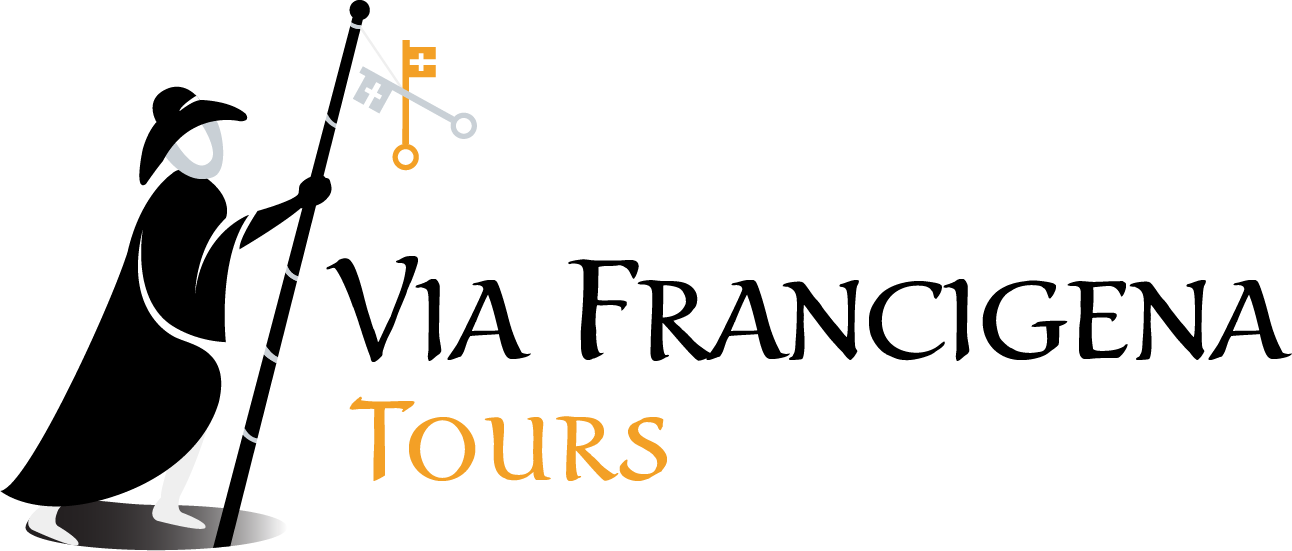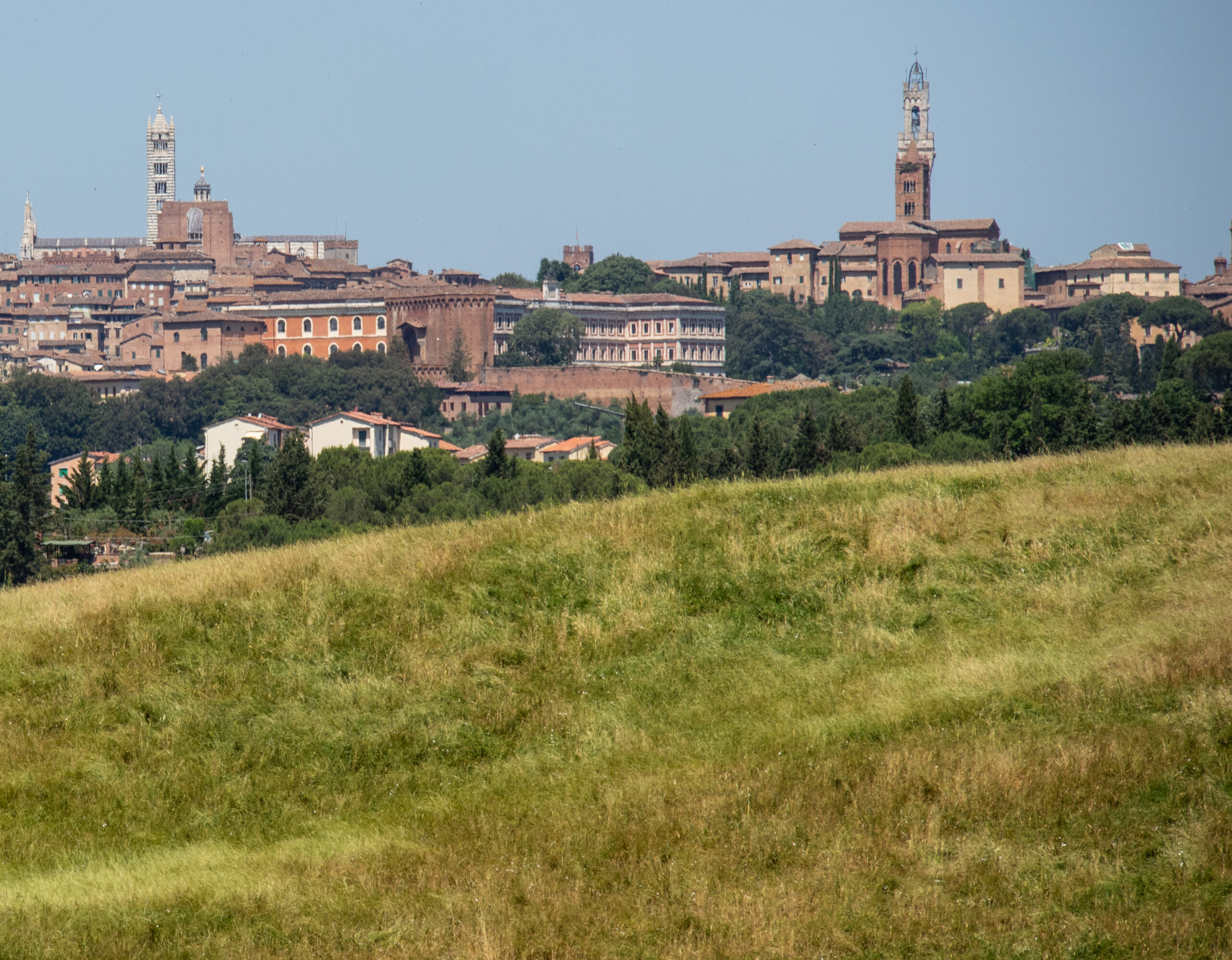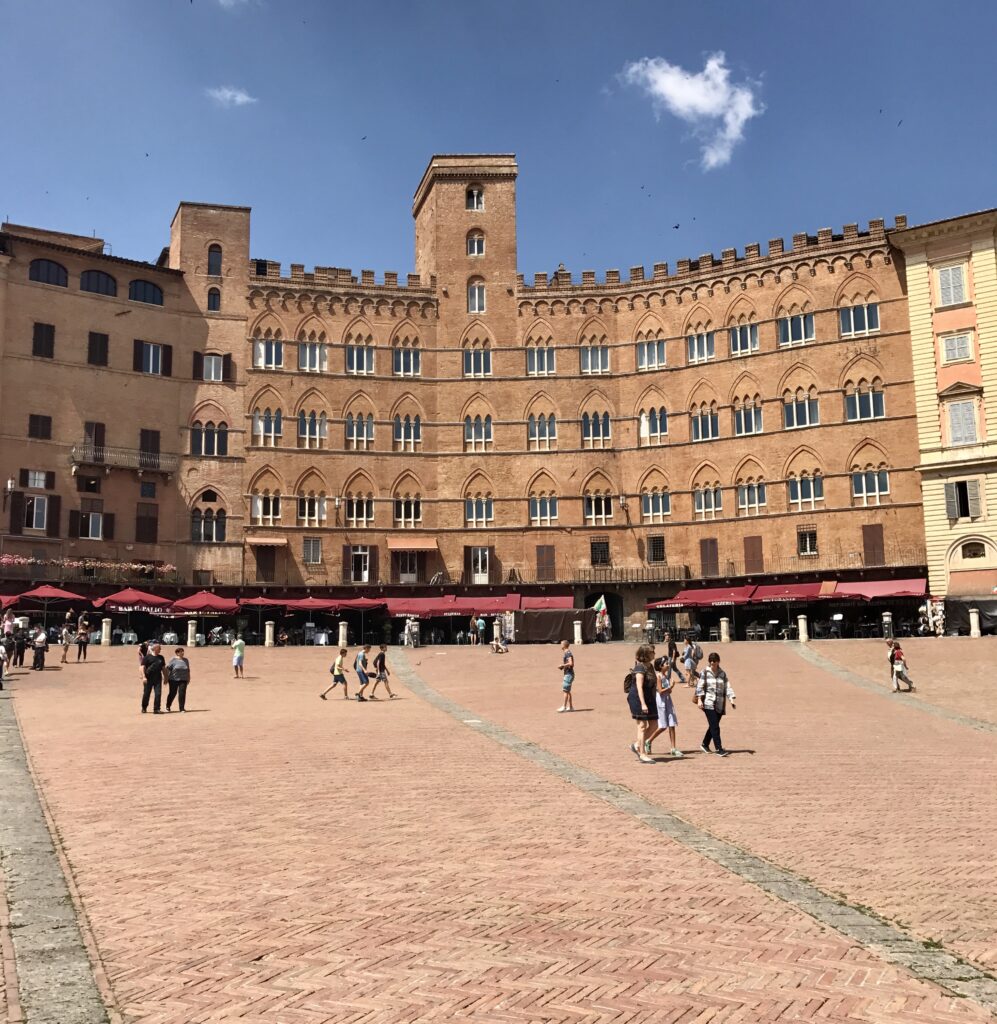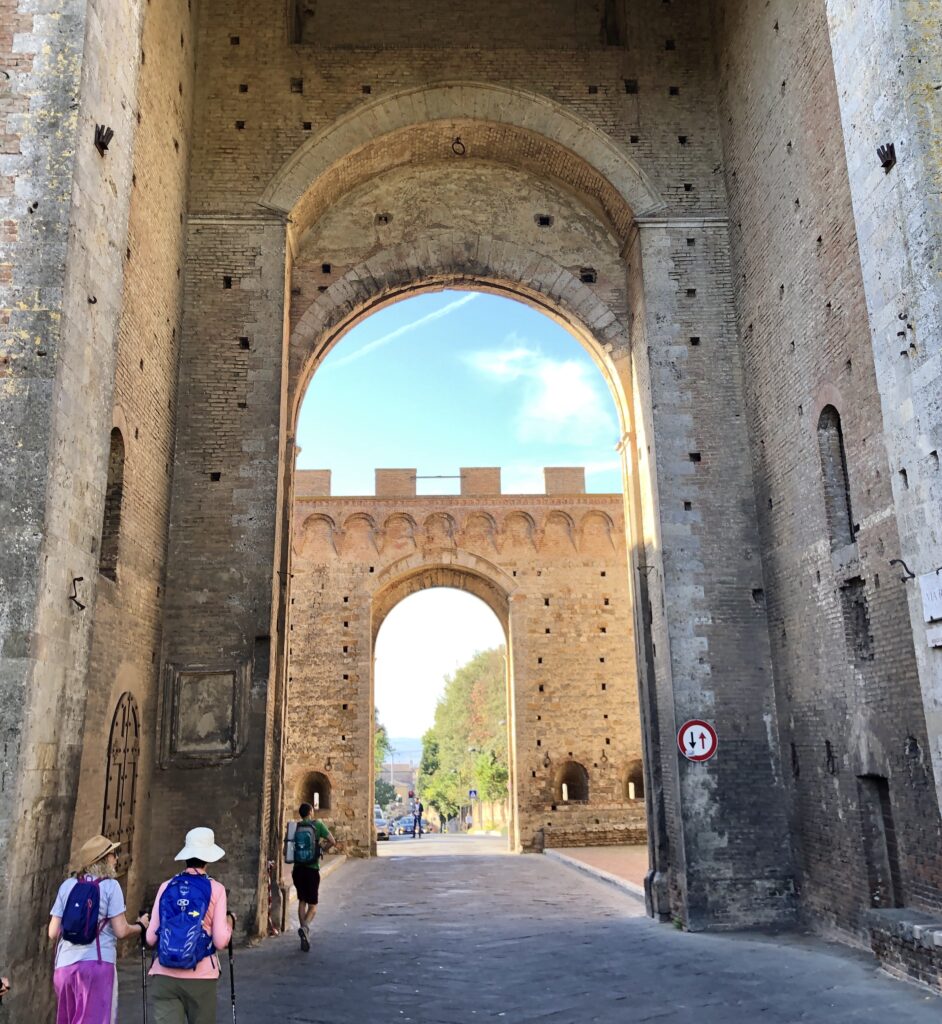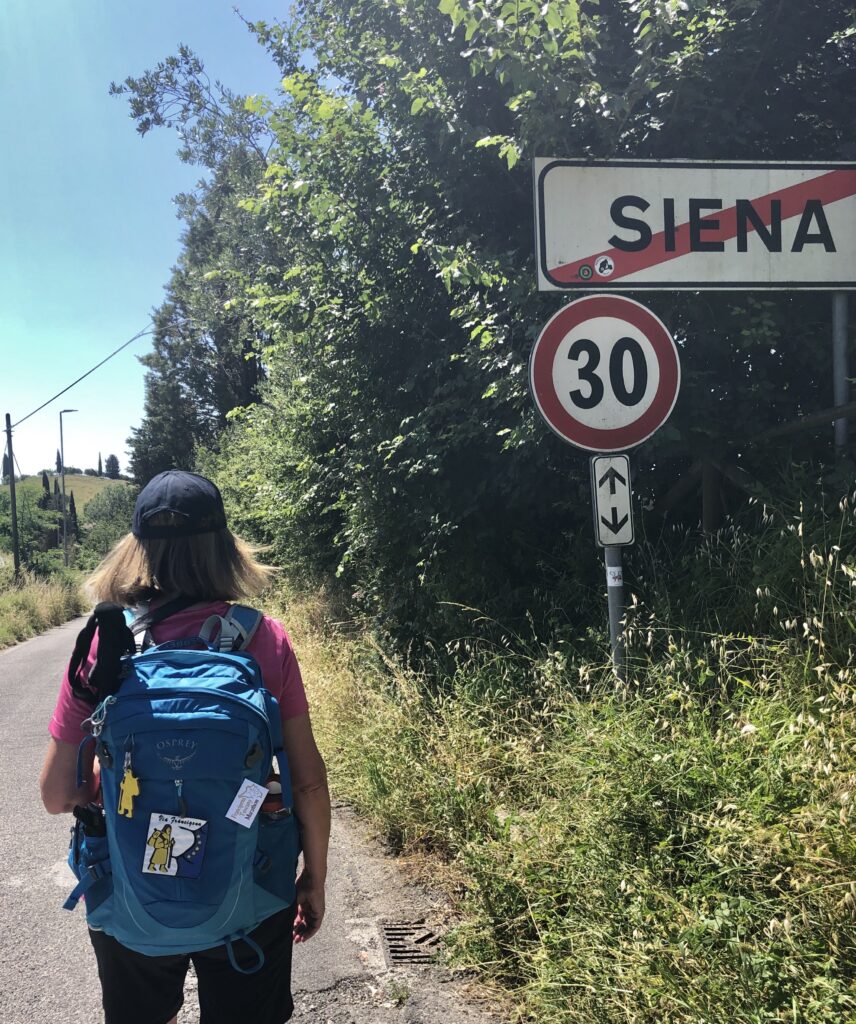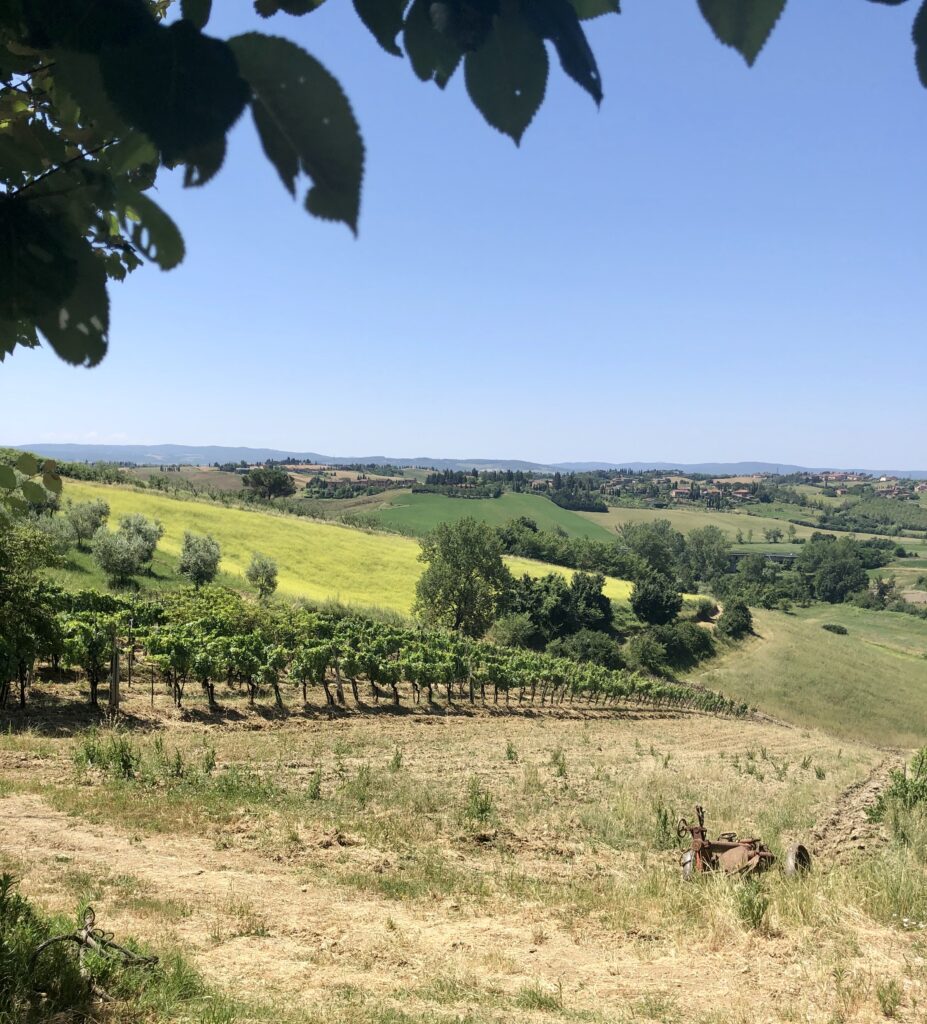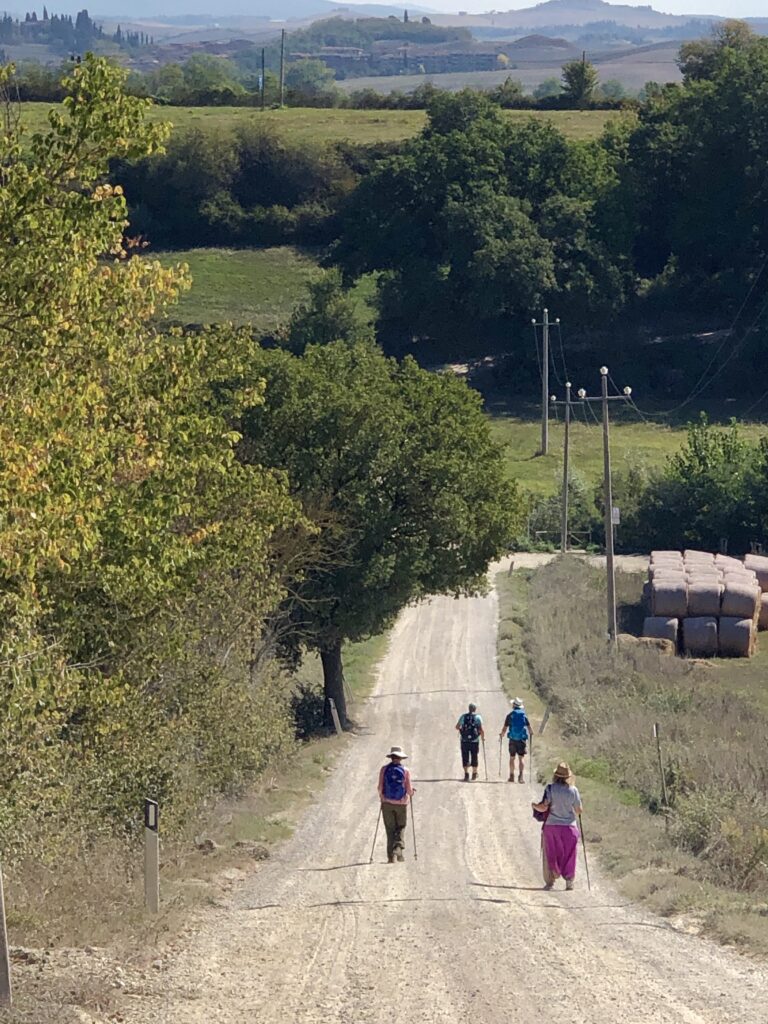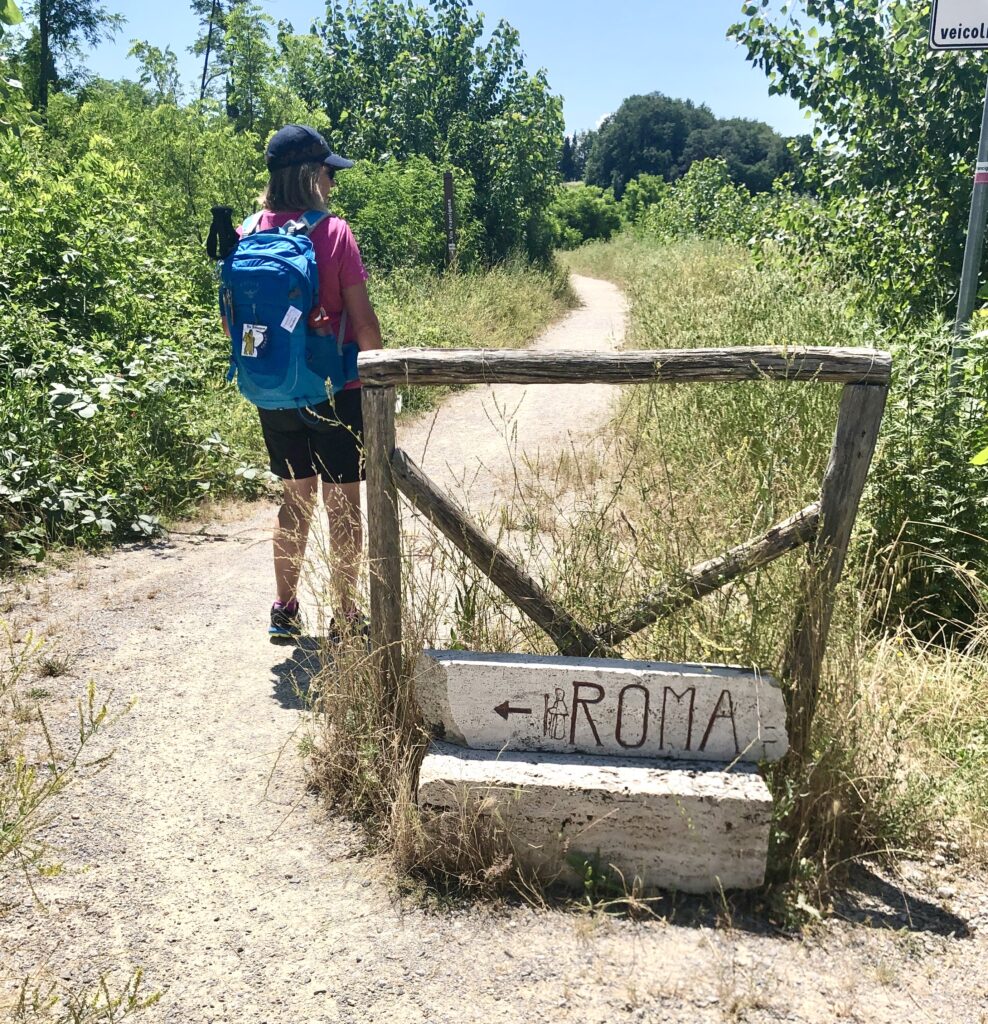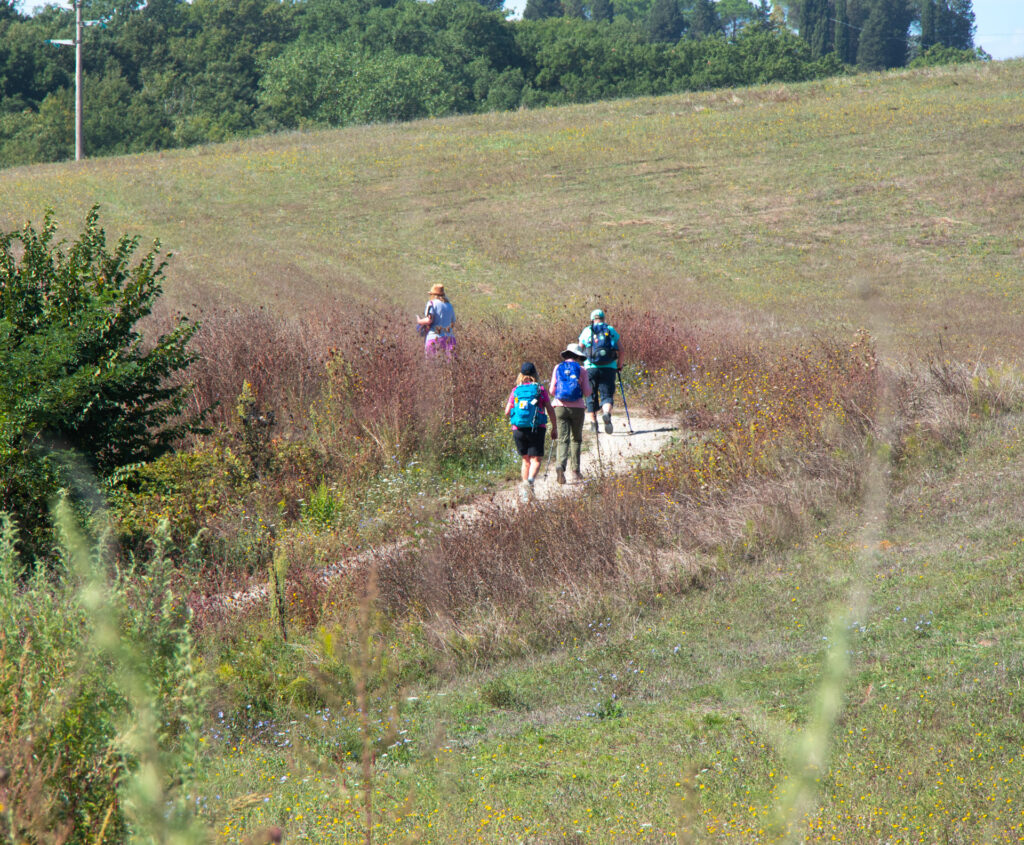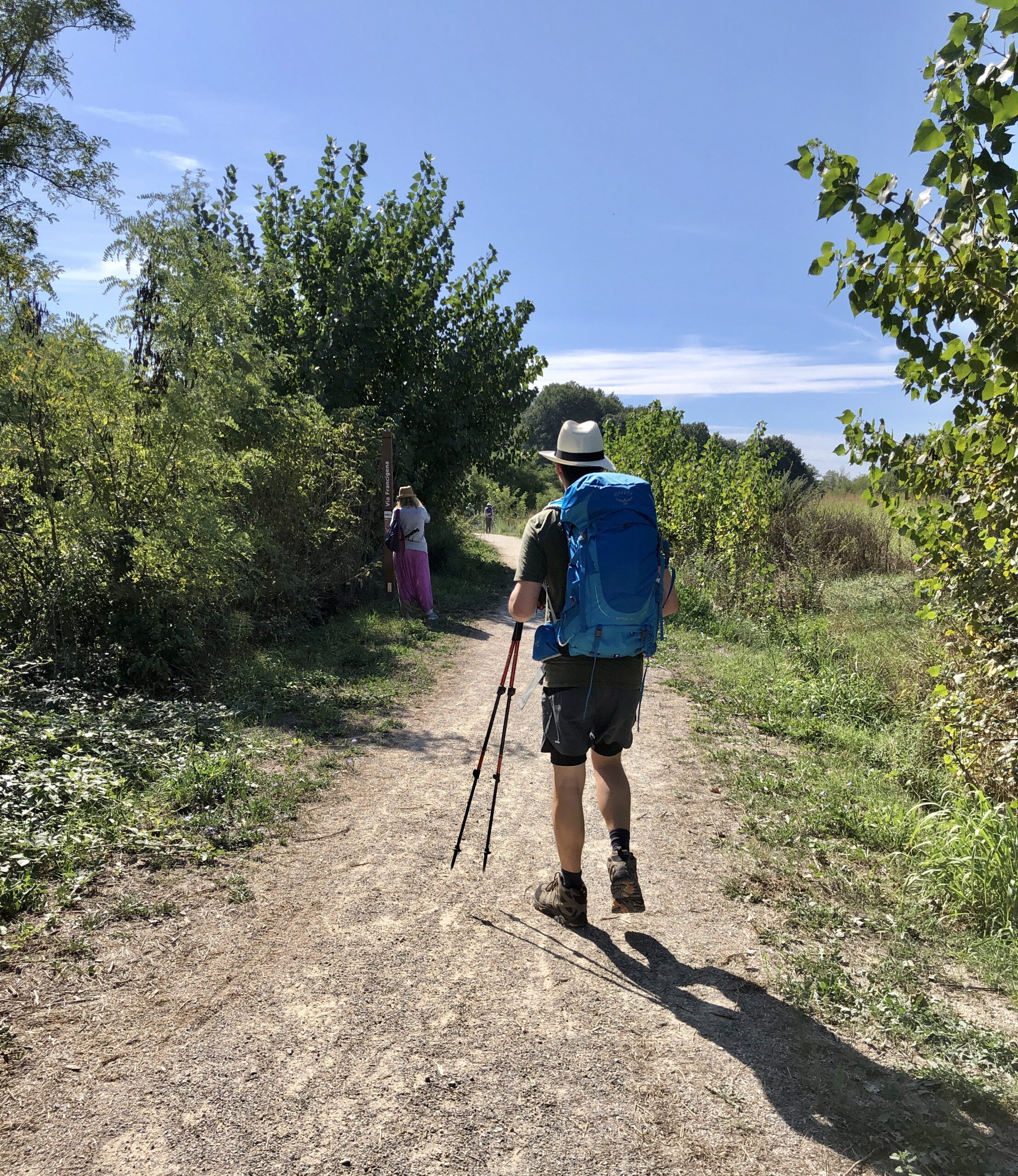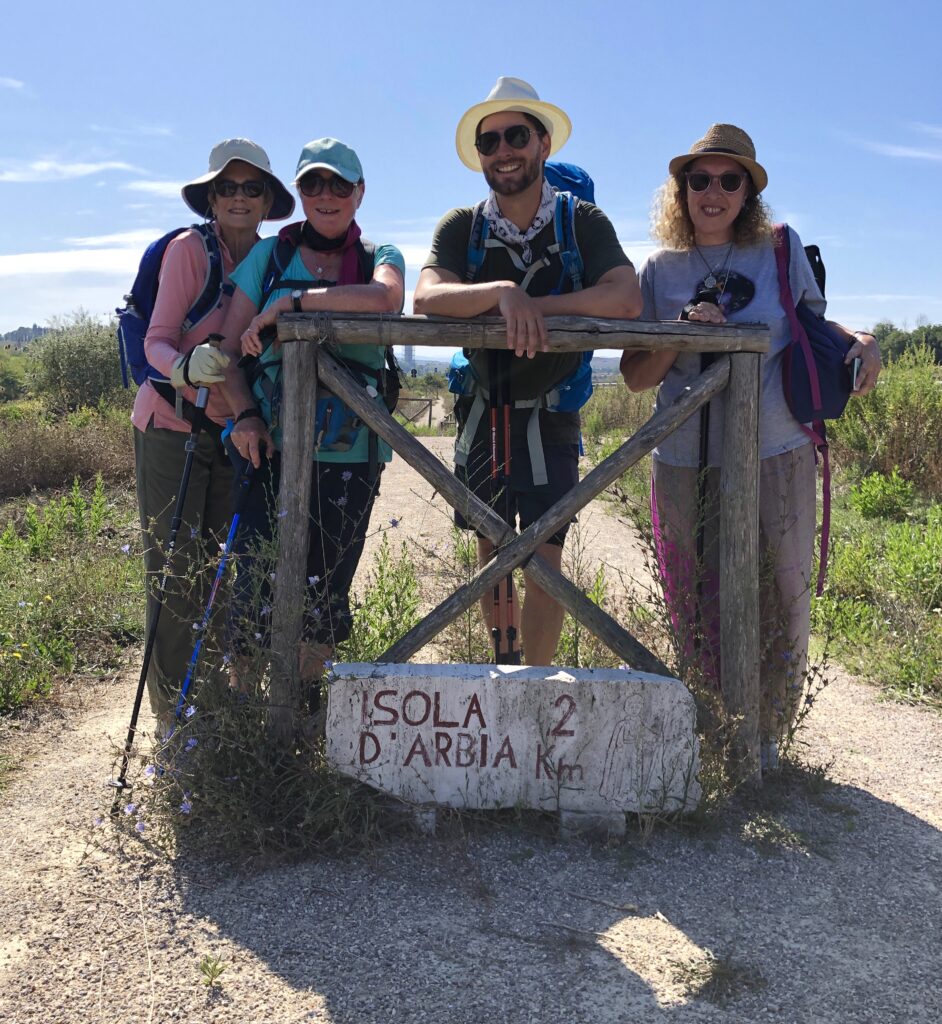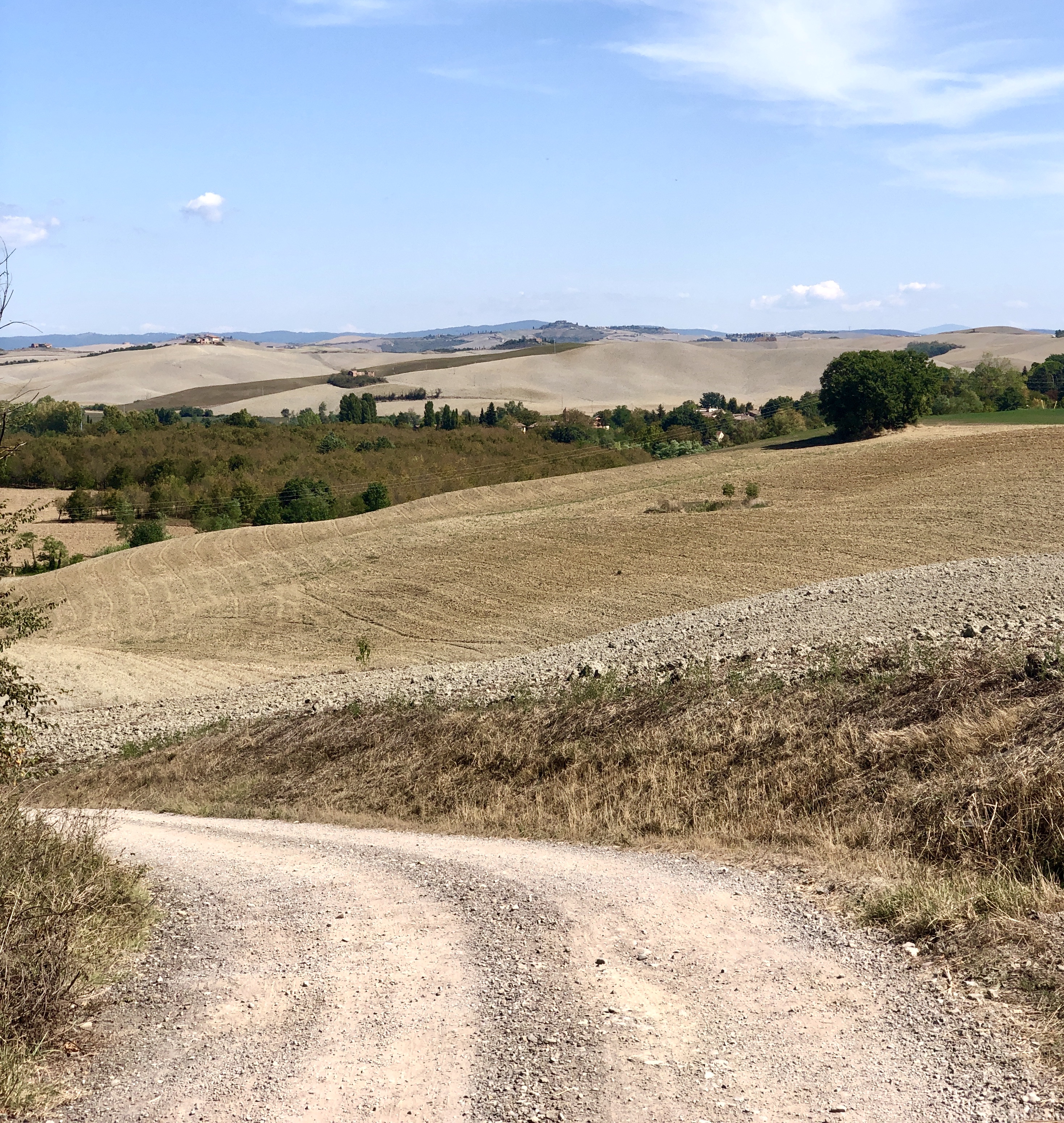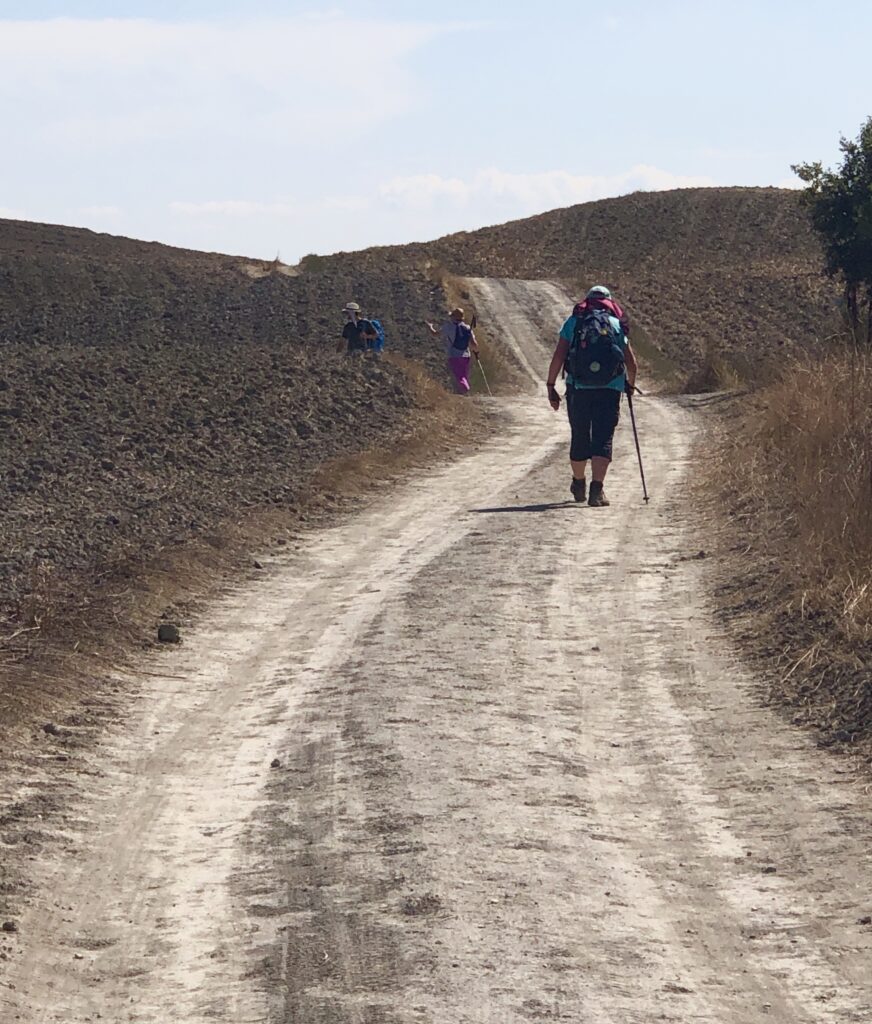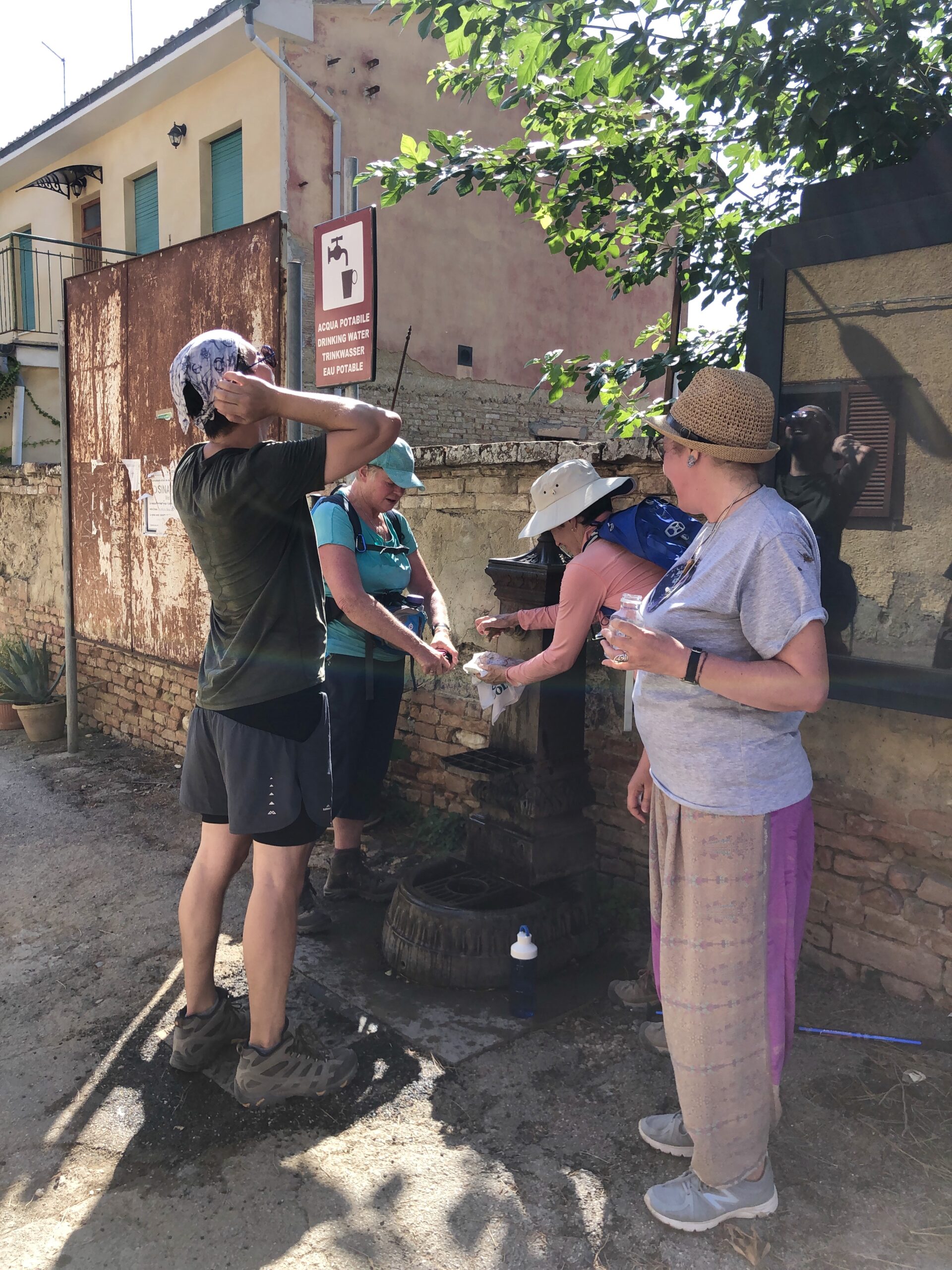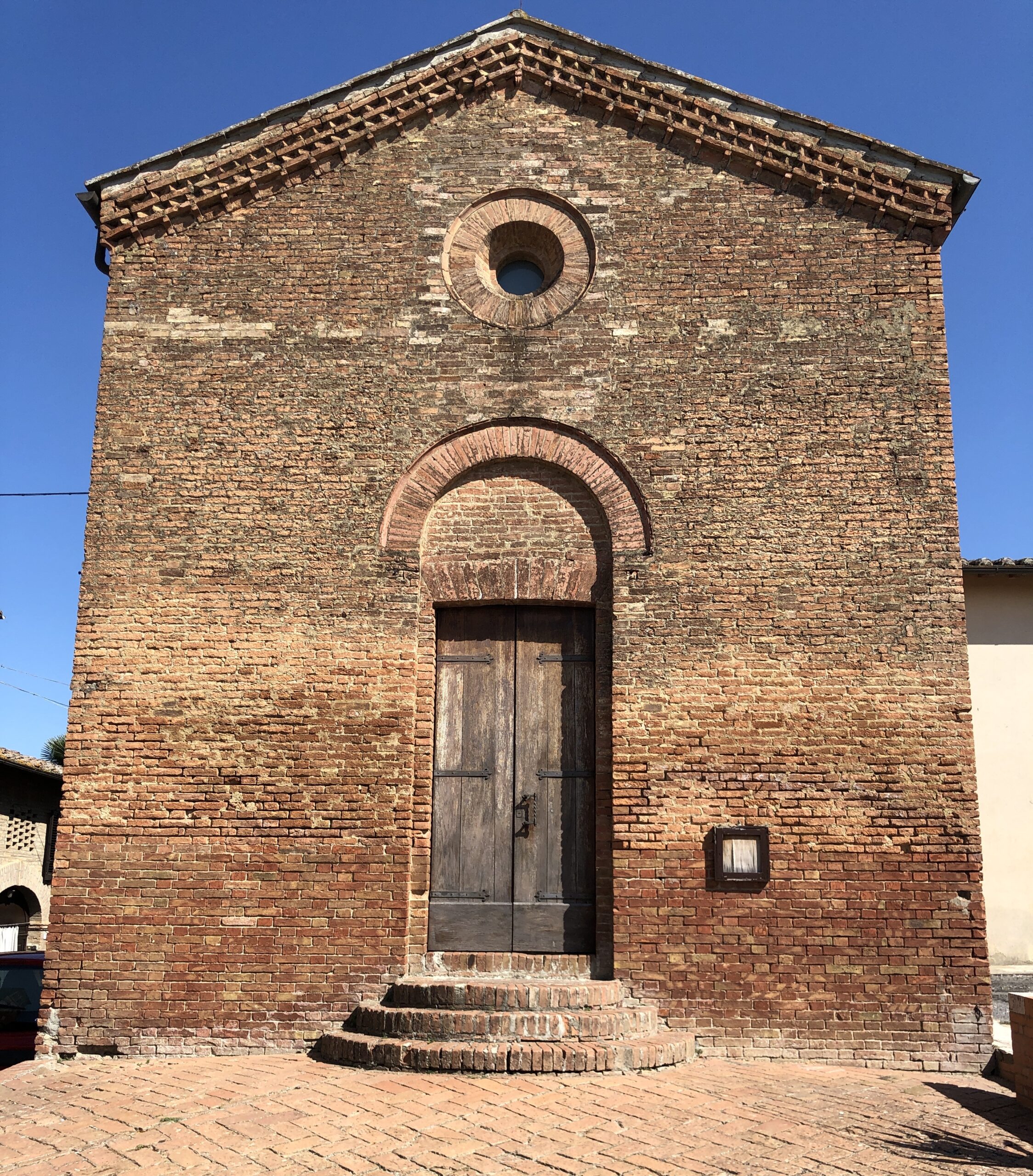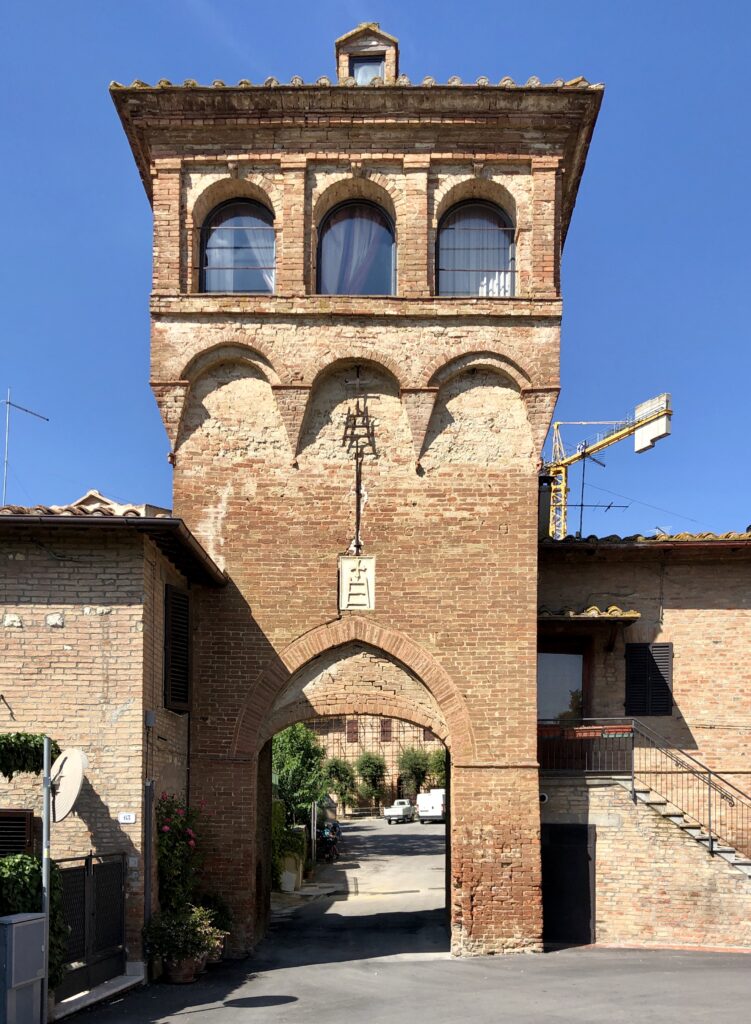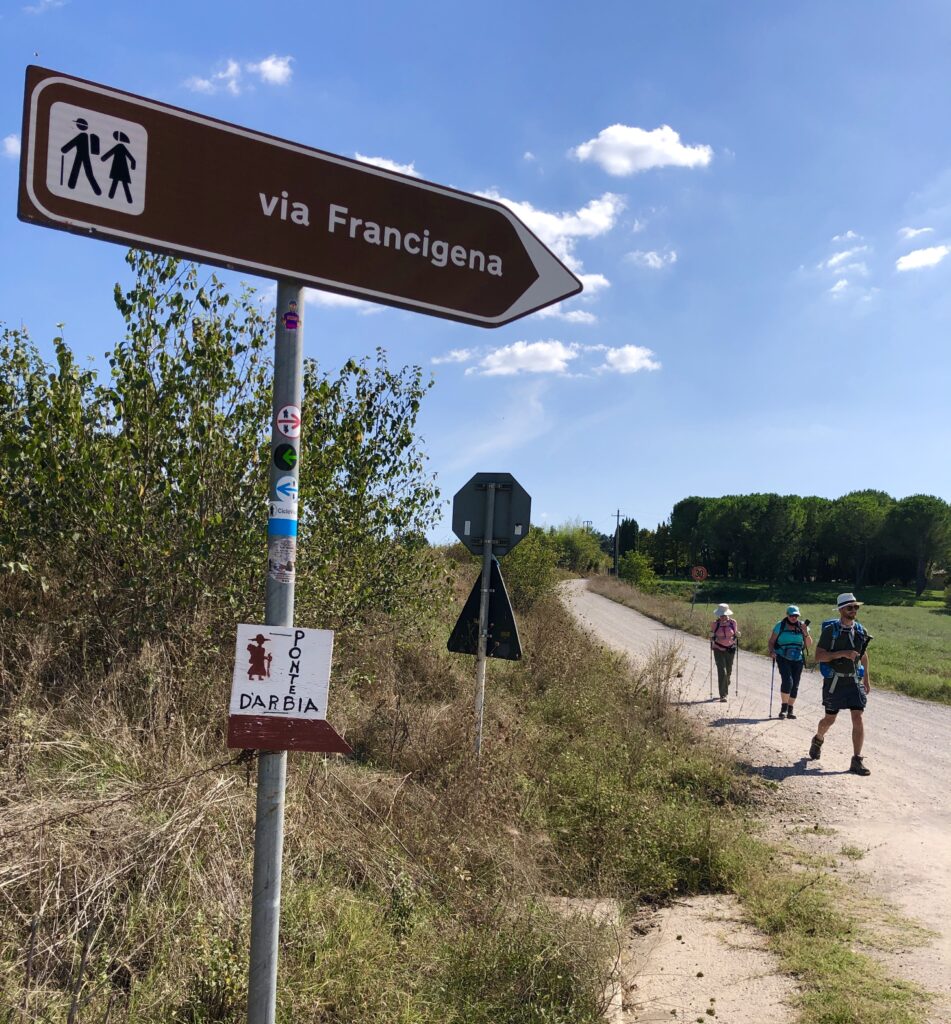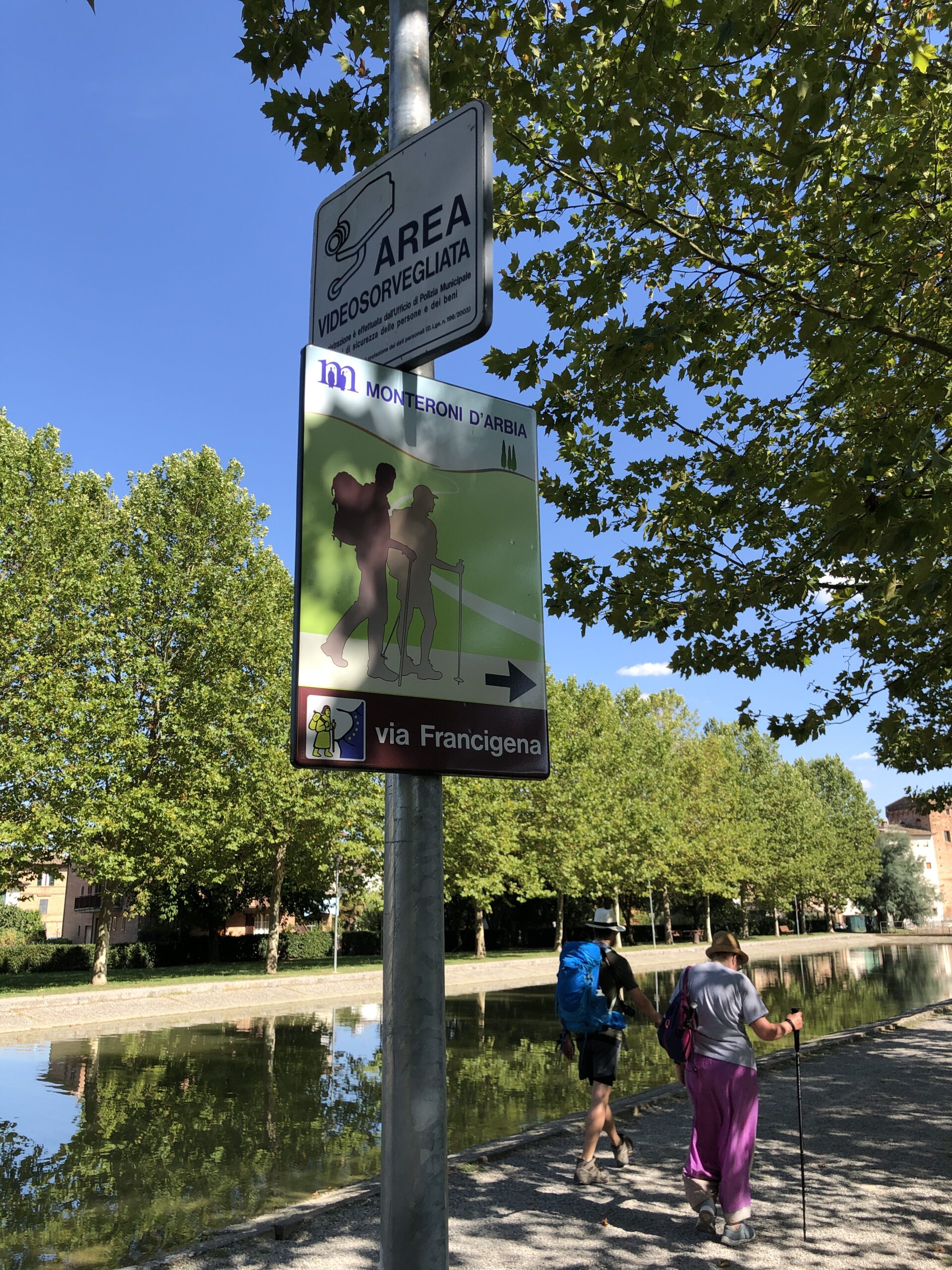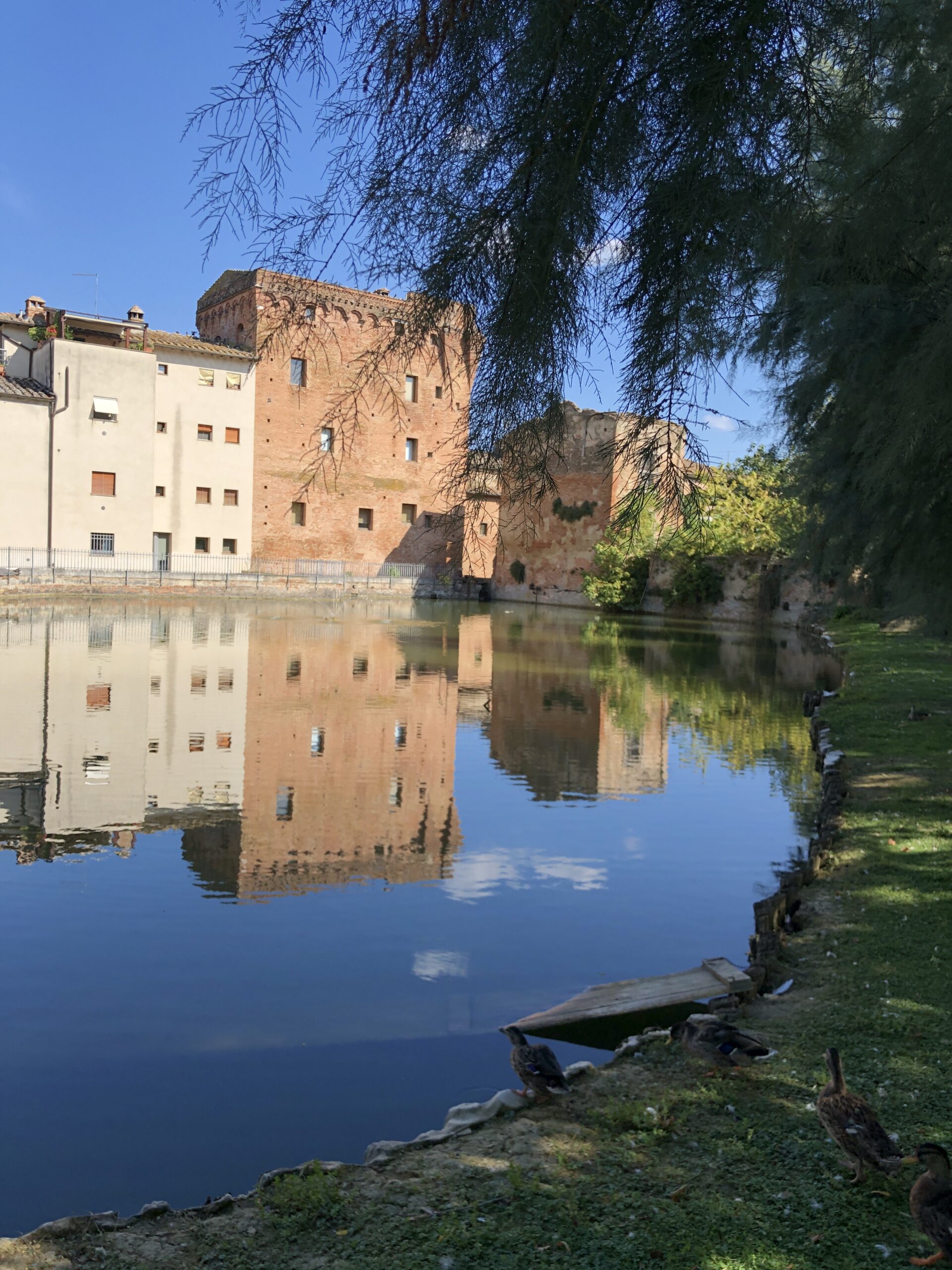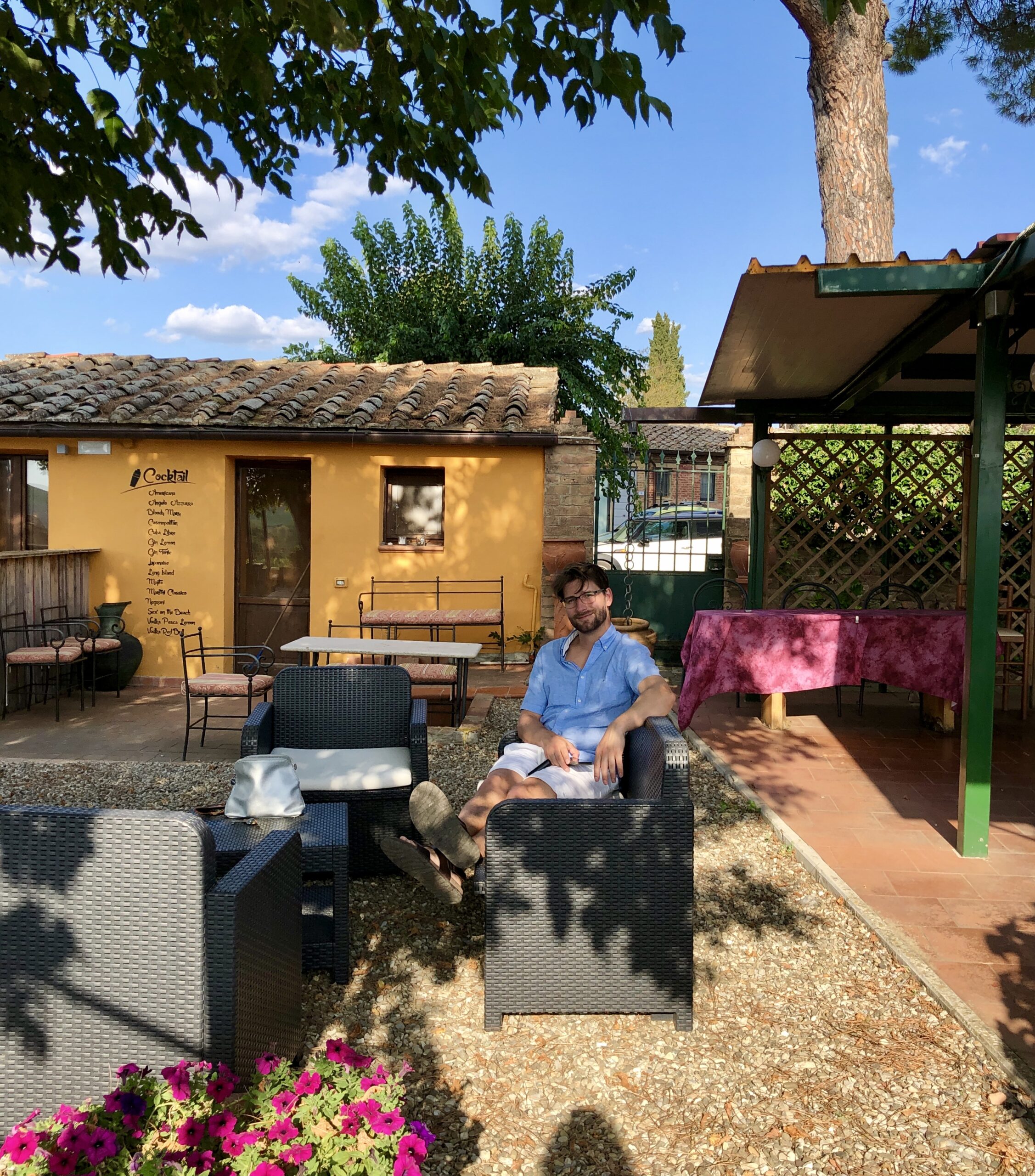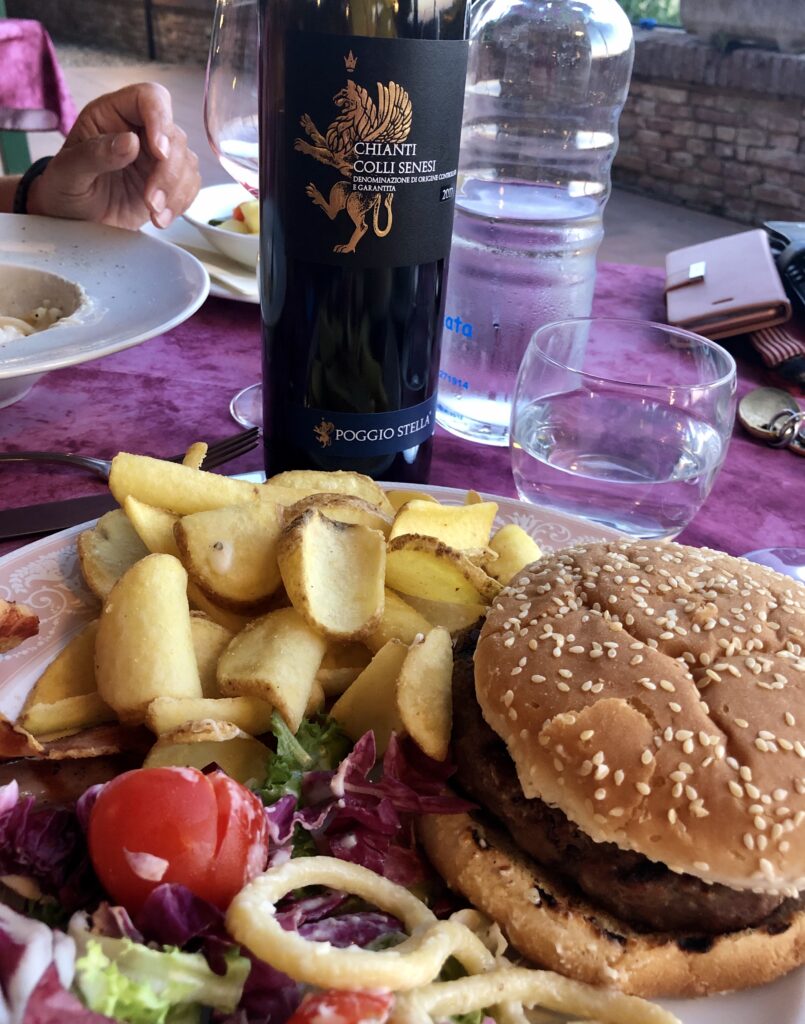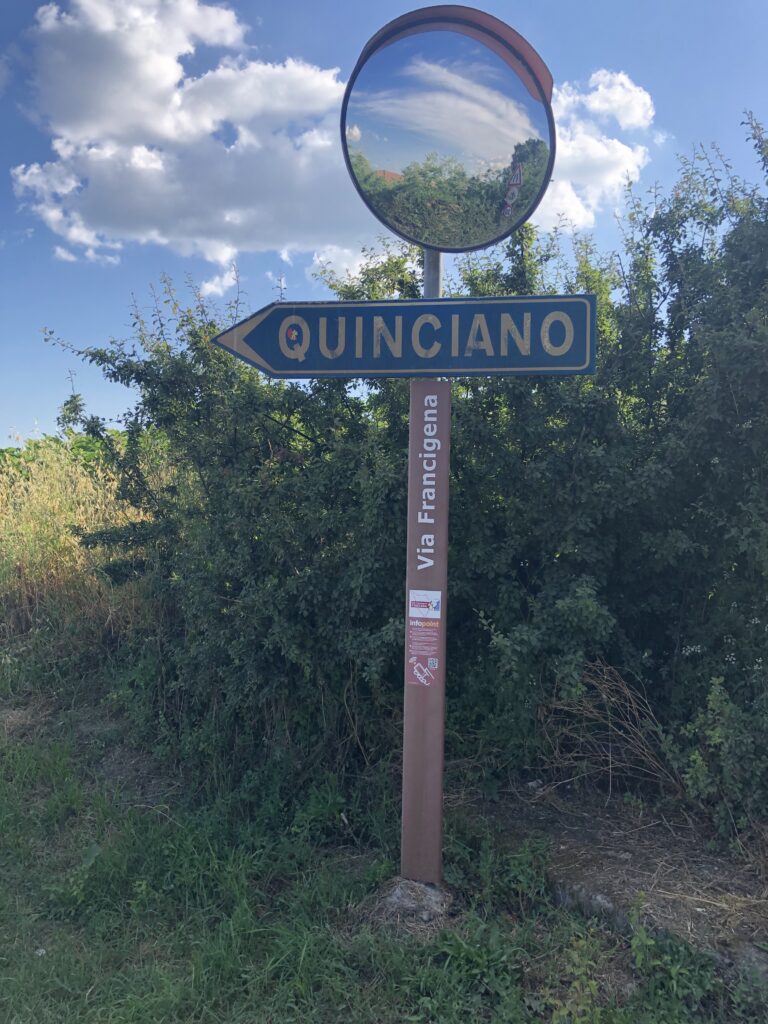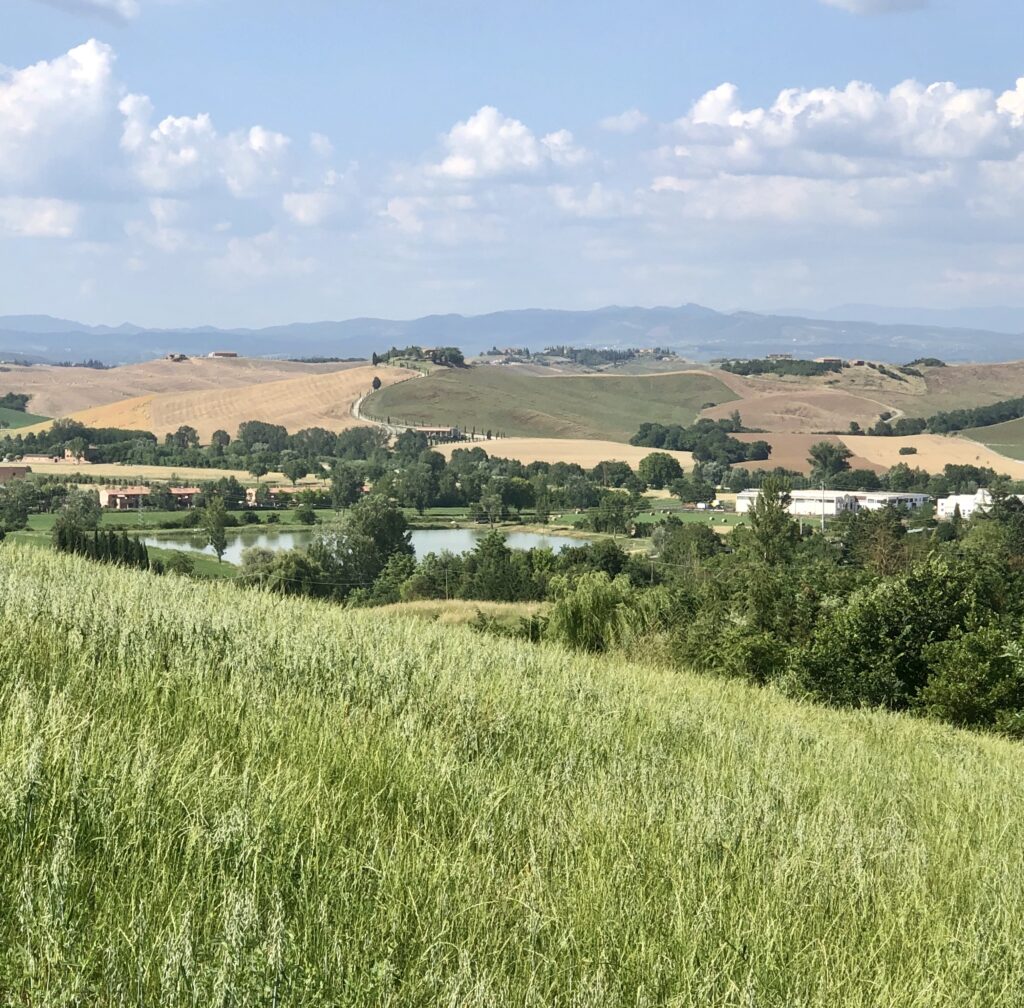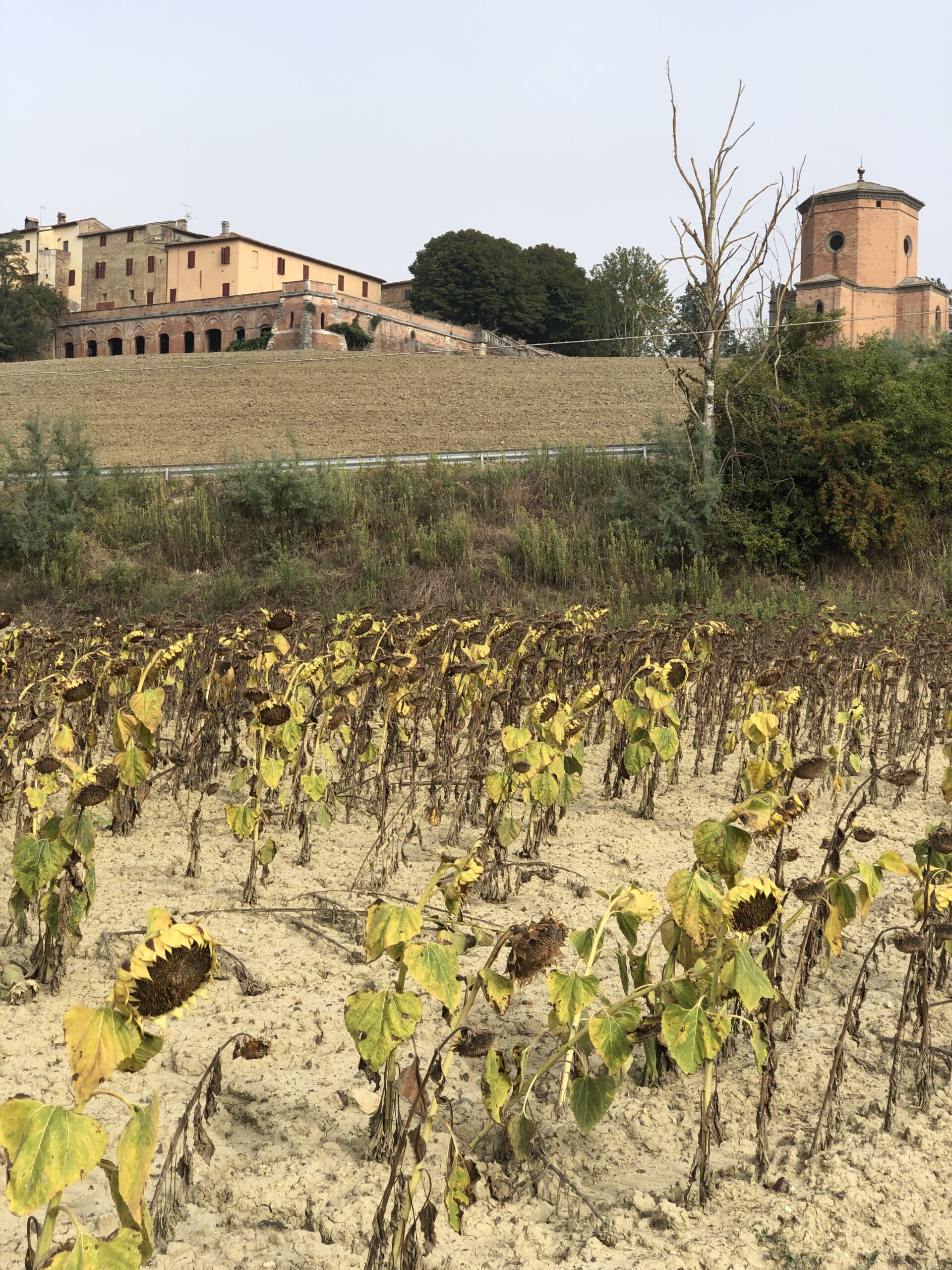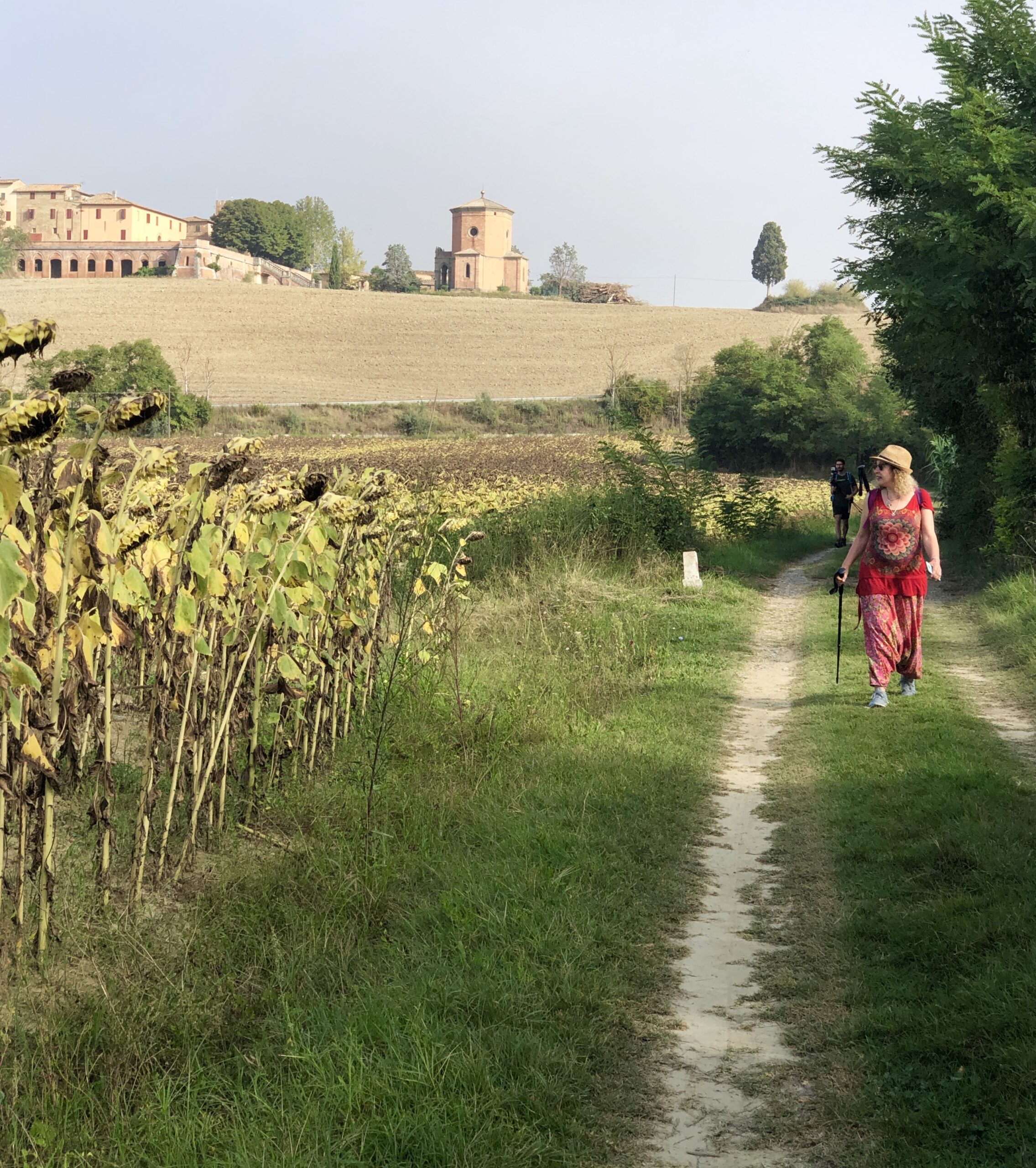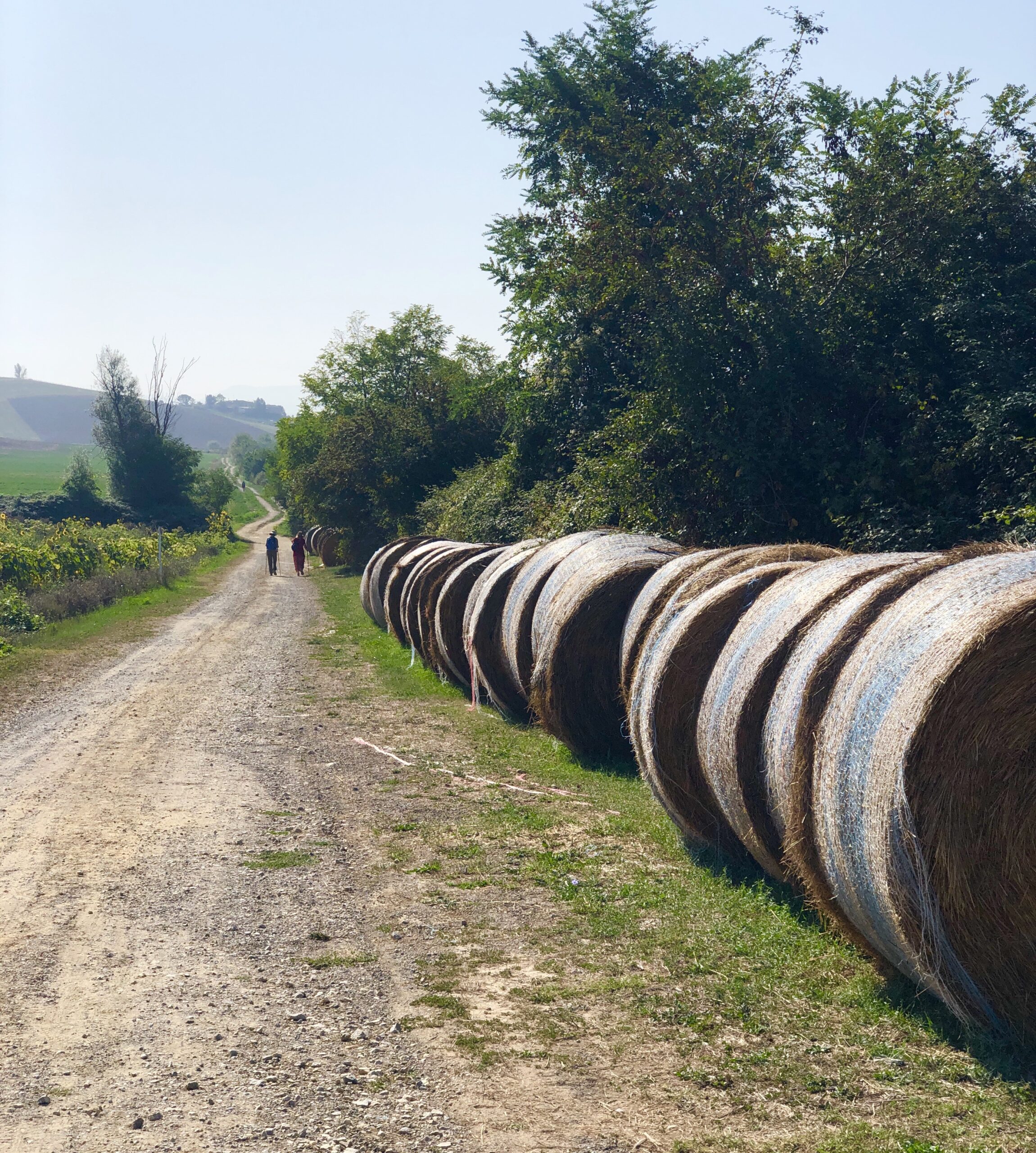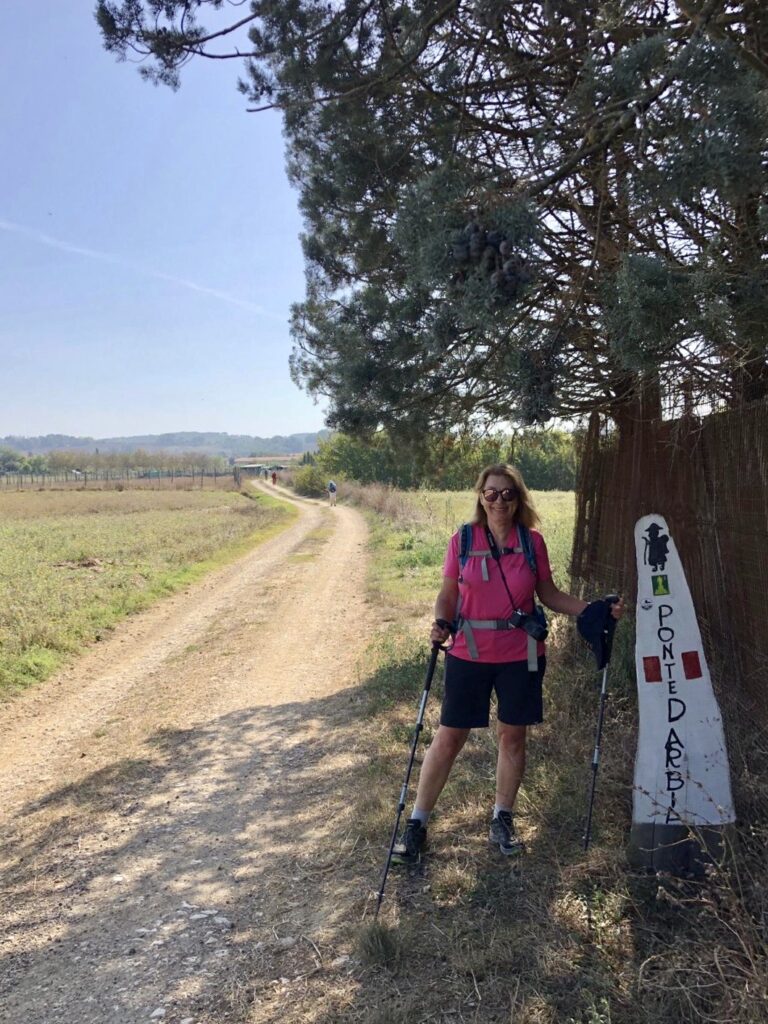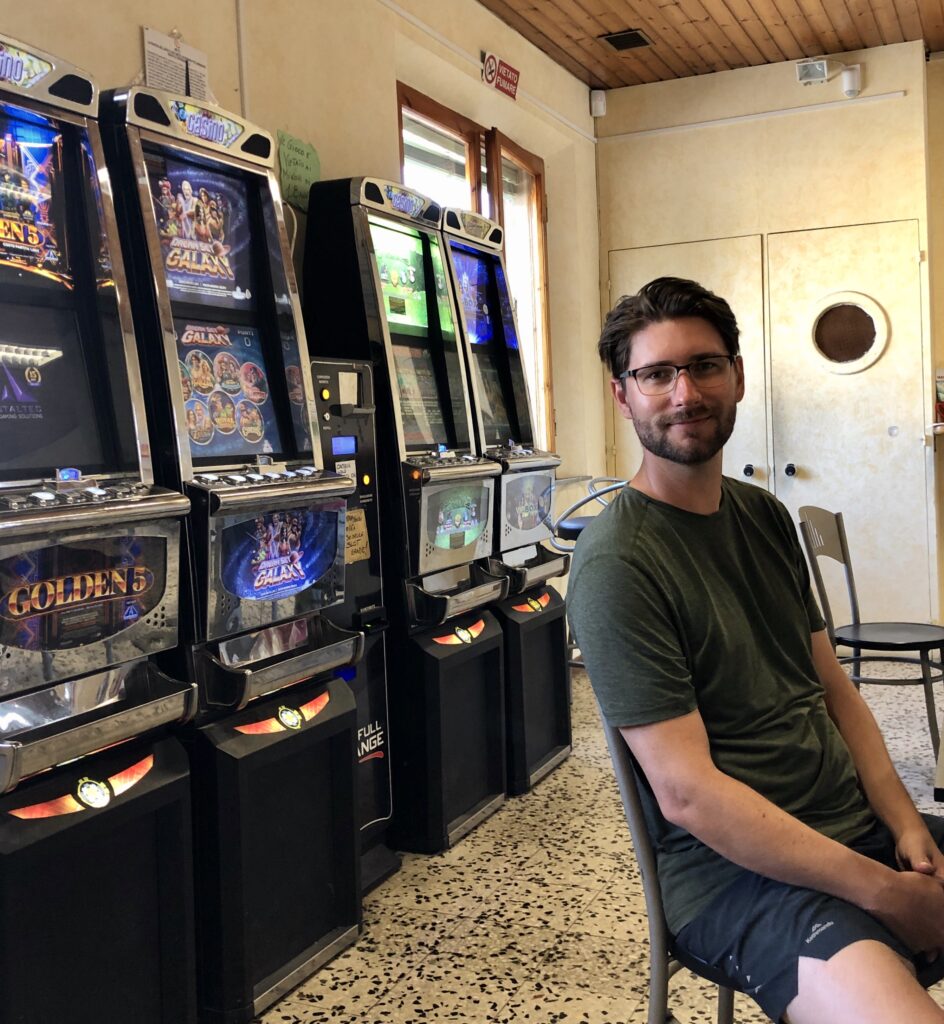Via Francigena Stage 34 Siena to Ponte d’Arbia

Via Francigena Stage 34 is a 26 km walk from Siena to Ponte d’Arbia. For the first 10 km there is a gradual descent from about 350 m to 190 m. After that, it is a level walk through the Tuscan ‘badlands’ for another 6 km. Despite the stark beauty of this area, there is little shade or bars for refreshments. In addition, there is very little accommodation in Ponte d’Arbia. As a result, we prefer to walk to Lucignano d’Arbia and continue to Ponte d’Arbia the next day.
Stage 34 starts at Piazza del Campo, Siena
Via Francigena Stage 34 starts from Siena at Piazza del Campo. Facing Torre del Mangia go to the left and then turn right into Via di Partenato. This road takes you past Palazzo Piccolomini and the Logge del Papi and the Church of San Martino. After 1 km the road becomes Via Roma. Continue along Via Roma for 0.5 km to Porta Romana.
Visit Porta Romano taking note of its historical significance to the Via Francigena. After that, turn left into Strada di Certosa and continue along the sealed road admiring the Tuscan views. About 4 km from Porta Romana there are spectacular view of Siena in the distance. So make sure you look for a place to stop for some photography or sketching.
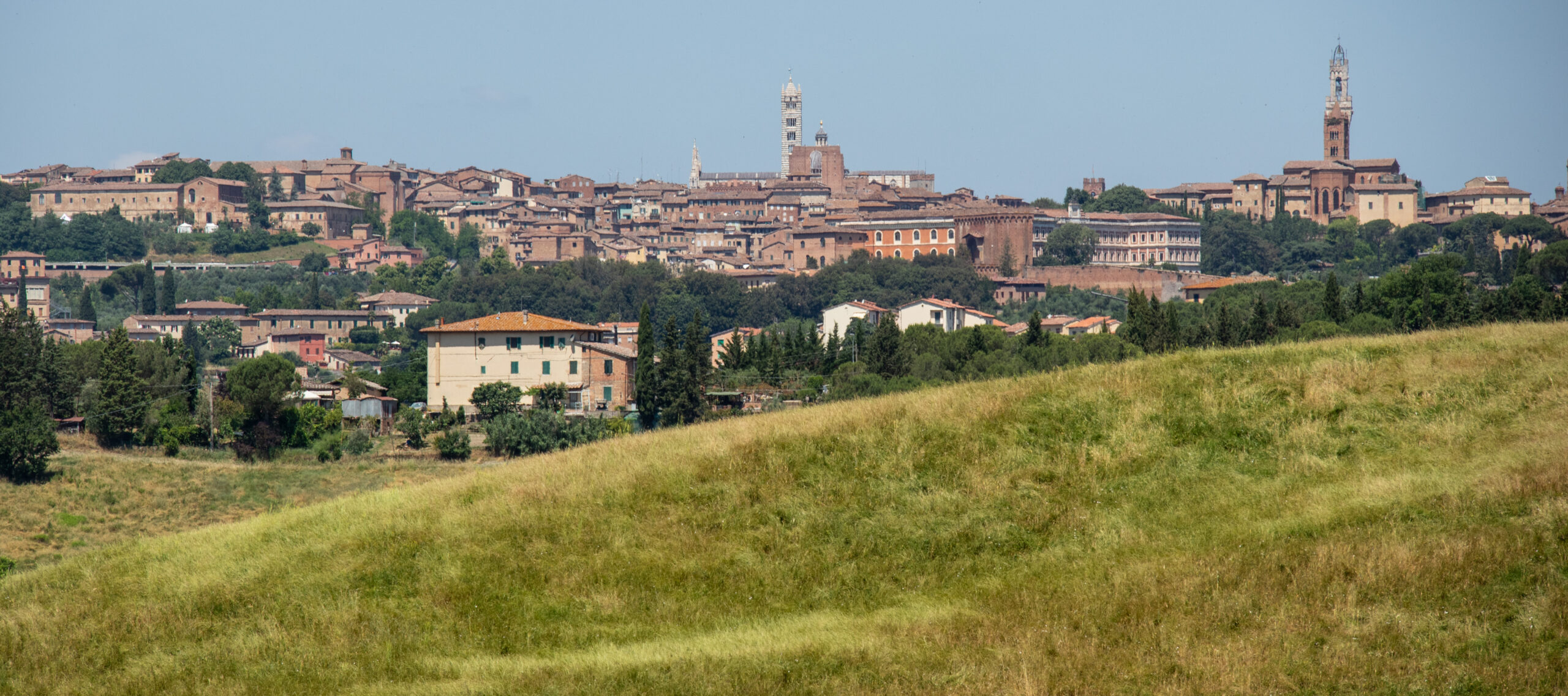
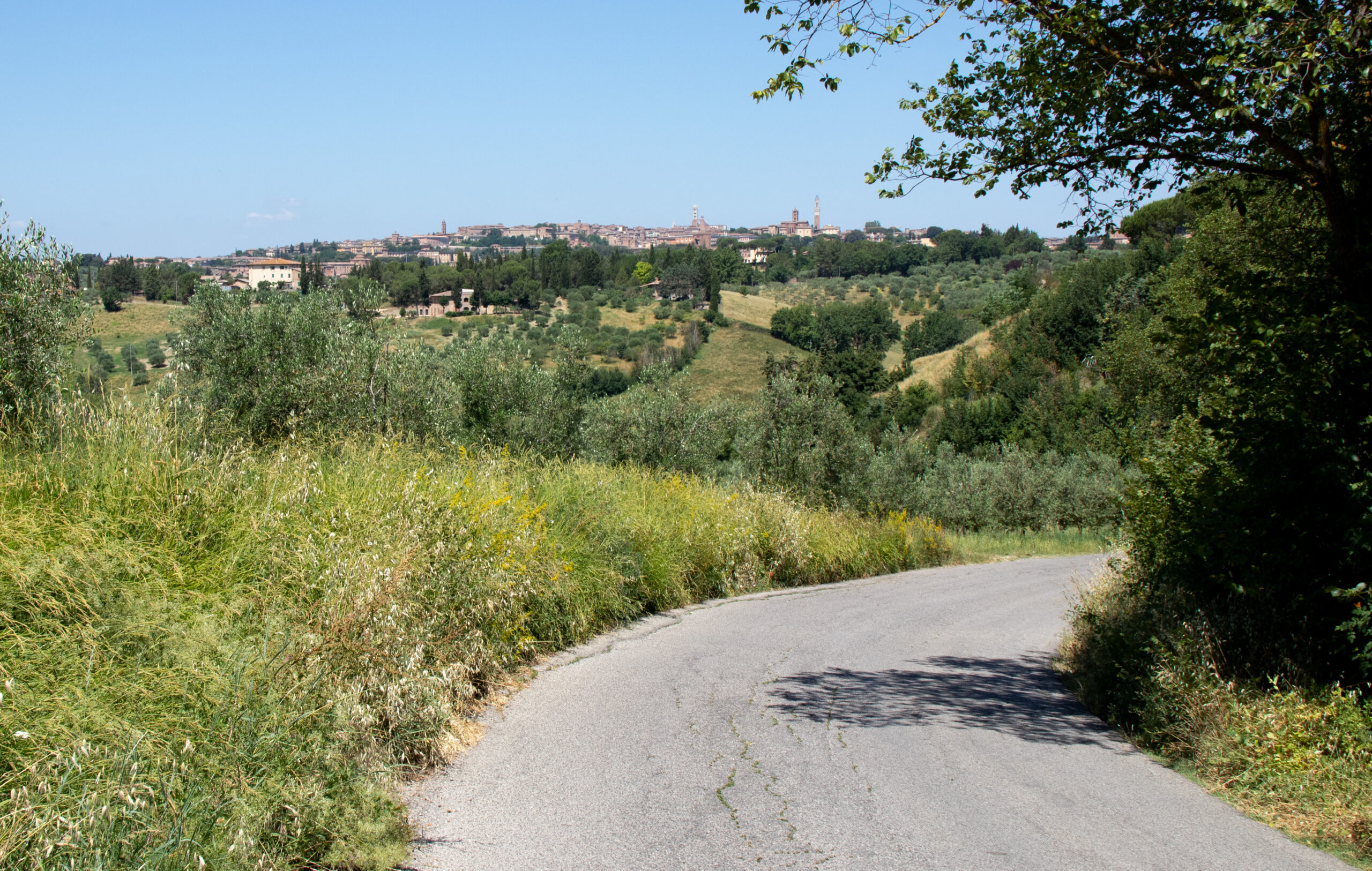
Siena to Isola d’Arbia
Continue along Strada di Certosa for about 6 km admiring the surrounding views of the Tuscan hills and Siena. The Church of San Pietro a Paterno is on a bend near the end of Strada di Certosa. It leads to a gravel road going steeply downhill to a sign pointing to Rome. After an enjoyable walk through fields you end up at a landscape material yard! Follow the road for a short distance and take the road to the right leading to a roundabout.
Cross the roundabout on the left hand side and stop for a photograph at the 2 km to Isola d’Arbia sign. This leads to a trail that runs beside Via Cassia. There are several bars for refreshments in Isola d’Arbia. My favourite is the Isola d’Arbia Tavola Bar which has great salads!
Isola d’Arbia to Cuna
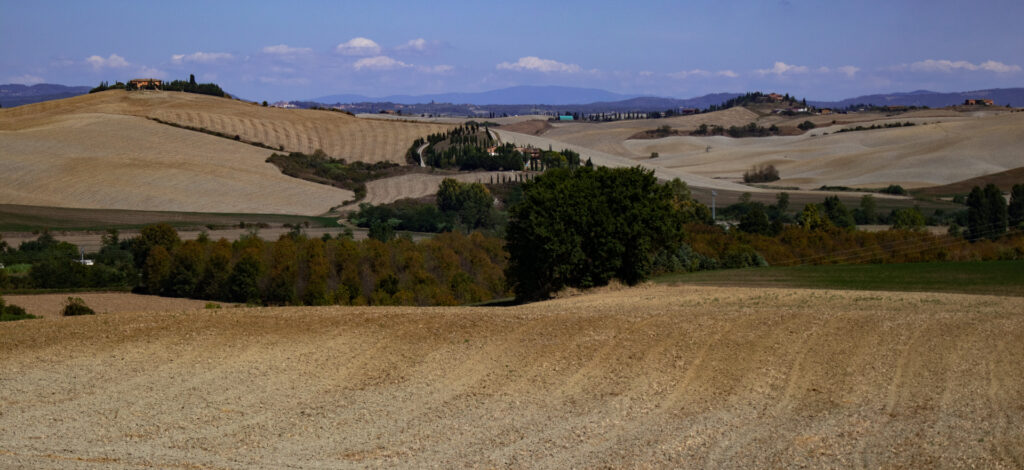
The Via Francigena Stage 34 walk from Siena to Isola d’Arbia is about 10.5 km. Leaving Isola d’Arbia there is a dramatic change in the landscape. This is the Crete Senesi or ‘badlands’ of Tuscany! White clay, eroded gullies, hilltop houses and cypress trees are typical of Crete Senesi.
Leave Isola d’Arbia and continue a short distance along the Via Cassia. After crossing the road continue through the streets of Isola d’Arbia. Turn right just past the town, walk under the overpass and turn left. After a short distance you leave the sealed road and continue along the white gravel roads typical of the Crete Senesi.
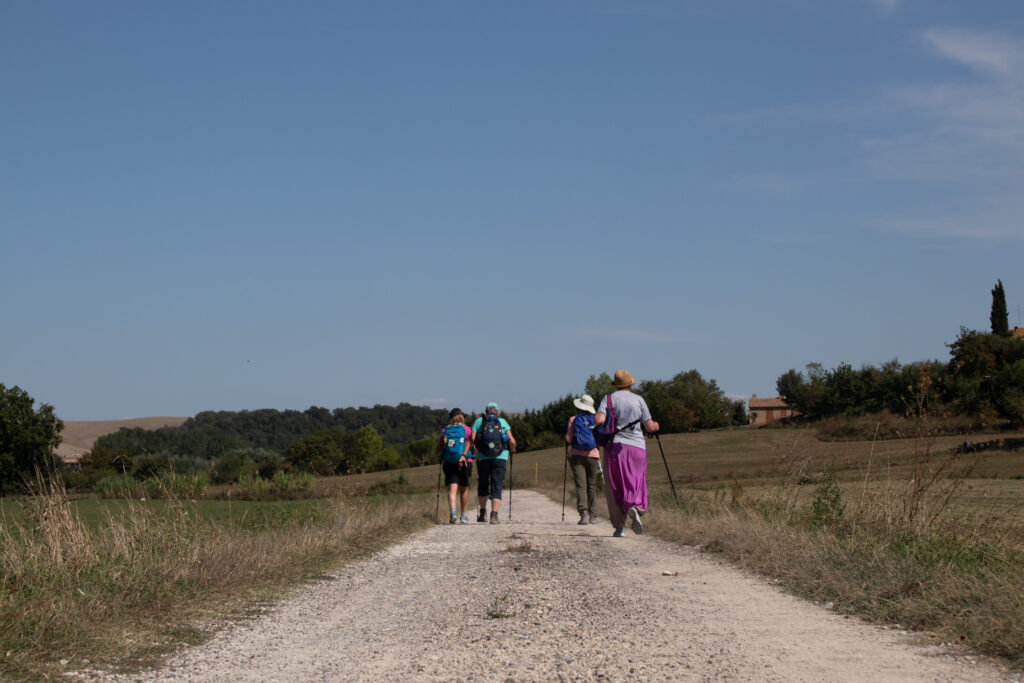
Walk from Isola d’Arbia to Cuna along white gravel roads. And after 5.5 km visit the medieval remains of Cuna. Upon arrival, walk through the town and enjoy its history.
Grancia di Cuna
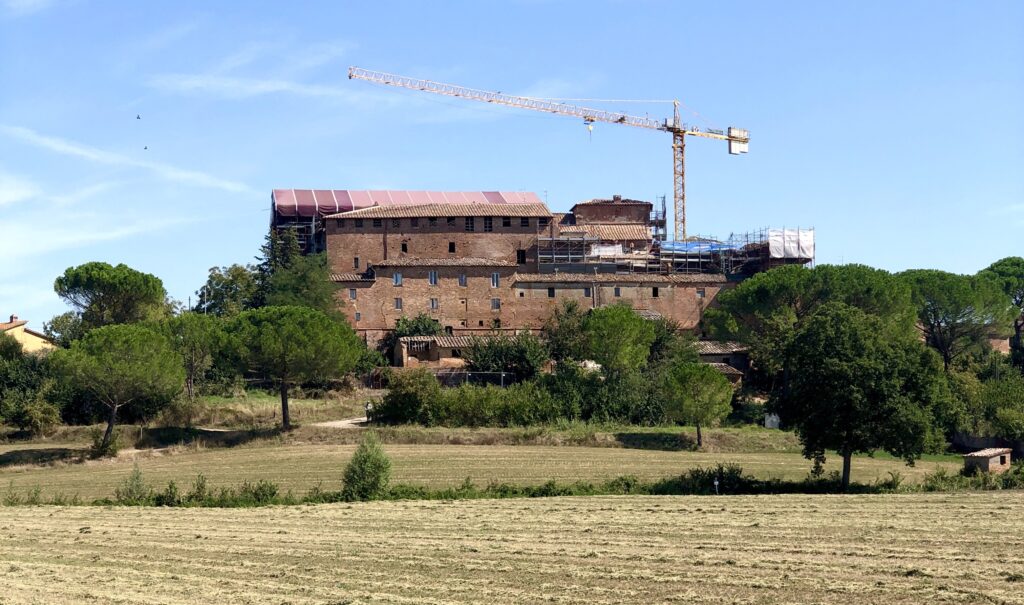
Cuna was a place where grain was harvested and stored. In the 12th century it was run by the Abbey di Torri. In the 13th century it was connected with the hospital of Santa Maria della Scala in Siena. This is evidenced by their their symbol on buildings. Over time, Cuna was fortified for protection. Nevertheless it was sacked by Austrian-Spanish troops in 1554. Today, there is work in progress to restore Cuna!
Areas being repaired are out of bounds in Cuna. However, the water fountain is very welcome after the long, hot walk. After refreshing yourself visit the sites along the main street. The Church of San Jacopo e Cristoforo is just outside the fortified town gate. It is a small 12th century red brick building with a single nave and no apse. Inside there is an impressive cycle of 15th century frescoes. One scene includes the miracle of the hanged man and another the name of the Church. Both are references to Camino de Santiago pilgrimage. This implies that Cuna has always been an important place of pilgrimage.
Cuna to Lucignano d’Arbia
Leave Cuna and continue straight ahead. At the Via Francigena sign you can continue straight ahead and walk another 10 km to Ponte d’Arbia. On the other hand, it is much easier to turn left and walk through Monteroni d’Arbia. We certainly appreciated the shade and the lake! This made the last 4.5 km to our hotel a little easier!
Our hotel in Lucignano d’Arbia has magnificent views over the rolling hills of Tuscany from its rooftop restaurant. Here, we enjoyed the sunset and cold drinks! Carol the pilgrim could not resist a hamburger with a bottle of Chianti!
Ponte d’Arbia via Quinciano
It is possible to walk directly from Cuna to Ponte d’Arbia. However, the walk will end up being about 28 km. In addition, there is little accommodation in Ponte d’Arbia. If you do continue to Ponte d’Arbia it is about 4 km to Quinciano. The landscape is predominated by endless roads of Crete Senesi white clay with little shade. Also, there is a continuous uphill ascent which affords panoramic Tuscan views.
Quinciano to Ponte d’Arbia
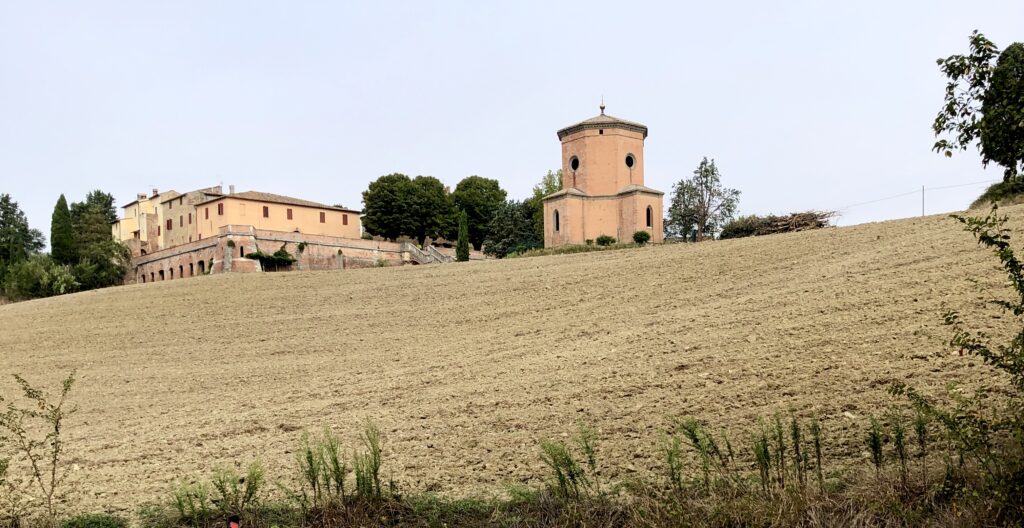
Quinciano has been on the Via Francigena route since before the days of Sigeric. Today the Castle of Saltennano is clearly visible. In medieval times it was a fortified complex surrounded by boundary walls. Today you can still see the complex with its three massive embattled towers. Nearby is the Capella Pieri Nerli. This chapel dates to the 19th century and is typical of Sienese neo-Gothic architecture. Inside there are artworks by well known artists of the time.
The walk from Quinciano to Ponte d’Arbia is a level, easy walk with magnificent scenery. It follows the railway line for about 6 km surrounded by the enchanting Tuscan landscape.
Arriving in Ponte d’Arbia
It is such a pleasure to see Ponte d’Arbia signs at the end of the long walk. Even better to see the sign to Bar H! It is a wonderful haven, complete with poker machines. But the rest, cold drink, food and stamp in the pilgrim passport make it worthwhile!
